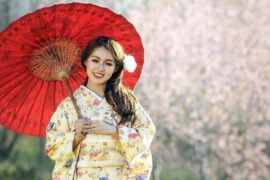Lighting is a fundamental part of photography that can dramatically alter the final image’s mood, texture, and overall quality. Whether capturing portraits, landscapes, or studio setups, understanding how to use light effectively is essential for all photographers. Mastering different lighting techniques allows photographers to highlight their subject’s best features, enhance atmospheric details, and create visually compelling photographs that resonate with viewers.
An excellent way to master this crucial skill is by enrolling in a reputable photography course that focuses on the nuances of both natural and artificial lighting. This article will explore essential lighting techniques and tips, providing insights into how photographers can manipulate light to enhance their photographic work.
Natural vs Artificial Lighting
Understanding the differences and uses of natural and artificial lighting is crucial for photographers. Natural light from the sun provides a soft and diffuse illumination that can add a warm and inviting feel to photographs. It is often preferred for outdoor and portrait photography because it naturally enhances skin tones and environments.
Conversely, artificial lighting, which includes studio lights, flashguns, and other artificial light sources, offers photographers control over the direction, intensity, and colour of the light, making it ideal for scenarios where natural light is insufficient or inconsistent. By learning to harness both types of lighting, photographers can create compelling images in a wide range of settings.
Techniques for Effective Lighting
Adequate lighting is not just about illumination but also about creating depth, dimension, and drama. Fundamental techniques include using the key light, fill light and backlight, each serving a specific function in shaping how the subject is viewed. The key light is the primary light source and sets the tone and direction of the lighting setup. Fill light helps reduce shadows caused by the key light, softening the subject’s appearance.
Backlighting, or placing a light behind the subject, can create a silhouette or enhance the separation between the subject and the background. Understanding these techniques through comprehensive photography courses can significantly improve a photographer’s ability to manipulate lighting effectively.
Understanding Light Color and Temperature
The colour and temperature of light are critical factors that affect the emotional impact of a photograph. Light colour is measured in Kelvin, with lower temperatures yielding a warmer, yellowish hue and higher temperatures producing a cooler, bluish light. Natural light changes colour throughout the day; it is warmer at sunrise and sunset and cooler at midday.
Artificial lights can also vary in colour temperature, and many are adjustable. Photographers must learn to understand and adjust the white balance settings on their cameras or modify their lighting setup to match the colour temperature of the light to the desired mood of their photographs.
Advanced Lighting Techniques for Studio Photography
Studio photography offers the opportunity to experiment with more sophisticated lighting setups that can dramatically enhance the visual impact of images. Examples include butterfly lighting, ideal for portraits as it creates a flattering shadow beneath the nose, or Rembrandt lighting, known for the iconic triangle of light on the subject’s cheek.
Softboxes, umbrellas, and reflectors can help diffuse light and reduce harsh shadows, providing a more even and professional look. Mastering these advanced techniques typically involves structured learning and practice, often available through specialised photography courses.
Creative Uses of Lighting in Photography
Beyond basic illumination, creative lighting uses can include techniques such as light painting, where photographers use handheld light sources to paint with light in a long-exposure photograph. Another technique is the use of gobos, stencils placed in front of lights to create shaped shadows or patterns of light.
These creative techniques allow photographers to add unique effects and a strong artistic touch to their images, turning ordinary photos into extraordinary art pieces.
The Psychological Impact of Lighting in Photography
Lighting does more than just illuminate a subject; it influences the viewer’s perception and emotional reaction to an image. Understanding the psychological effects of different lighting setups can significantly enhance a photographer’s ability to convey mood and narrative through their work. For example, low-key lighting, characterised by strong contrasts between light and shadow, can evoke feelings of mystery and suspense, making it ideal for dramatic portraits or moody landscape shots. Conversely, high-key lighting, predominantly light tones and minimal contrast, often creates an atmosphere of lightness and optimism, suitable for upbeat subjects.
Photographers can manipulate these psychological impacts by adjusting the lighting’s direction, intensity, and colour to align with the emotional tone they wish to communicate in their images. Side lighting can reveal texture and depth, casting shadows that emphasise form and features, thus adding a sense of gravity and seriousness. Backlighting can create a silhouette, removing detail and focusing on shape and form, often used to invoke mystery or anonymity.
Through training in structured photography courses, photographers can learn the technical skills needed to manage these lighting effects and develop the artistic sensibility to use lighting as a storytelling tool. This nuanced approach to lighting allows photographers to craft images that resonate emotionally, drawing viewers deeper into the scene depicted and leaving a lasting impression.
Mastering the art of lighting is critical for any photographer aiming to produce high-quality, impactful images. From understanding the basic differences between natural and artificial light to exploring advanced studio lighting techniques, a broad spectrum of skills must be developed. Enrolling in a reputable online photography course can provide the structured education and practical experience needed to harness these skills effectively. With dedication and practice, photographers can enhance their ability to control and creatively use lighting, elevating their photographic work to professional levels.































